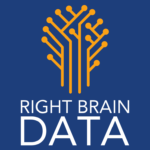How much is your data worth? Write down your best guess. What’s your margin of error? How confident are you in your answer?
Given the billions of dollars organizations spend on collecting, organizing, cleaning, integrating, and analyzing data, it seems like an important question. It’s also a difficult one to answer, with our modern-day oracles (Google and ChatGPT) providing about as much help as a Magic 8 Ball.
A partial answer is that, unless you’re in the business of selling data, your data in and of itself has $0 value. Data is only effectively monetized if and when it is leveraged to make better decisions.
This, of course, is the value proposition of Data Science. Over the last two decades, since FiveThirtyEight and Moneyball demonstrated the power of harnessing data to make more accurate predictions and differentiating strategic decisions, organizations in every industry have invested heavily in data to give them a competitive edge.
Has it worked? As the Magic 8 Ball might say, “Reply Hazy, Try Again”.
Organizations know that in order to succeed, they need to hire brilliant Data Scientists with the skills to utilize the latest technology. The label of Data Scientist has expanded to describe people with academic backgrounds in math, statistics, computer science, and engineering — all traditionally Left Brain domains. These brilliant Data Scientists have figured out how to efficiently process massive amounts of data, deliver predictions in real time and, most recently with Generative AI, automatically create content that mimics what a human might produce manually.
However, to borrow a phrase from P!nk and Miles Davis, “So What?“. What is the value of these Data Science products? Over the course of my 20+ year career in academia and industry, I’ve found that Left Brain thinking alone is insufficient to answer this question.
Answering the “So What?” question requires a clear connection between the Data Science product and the problem it is trying to solve, and it requires a meaningful (business-focused, typically non-standard) metric that measures how effectively the problem is being addressed.
There are many ways that Data Science can go wrong, and even the best Left Brain thinking is not enough to avoid these pitfalls. Instead, a Right Brain approach is needed. Thinking about the problem holistically and creatively. Communicating effectively with stakeholders and domain experts. Possessing the curiosity and flexibility to seek out and proactively solve potential problems and disconnections. These are the Right Brain superpowers that enable the selection of the right tool for the job.
How will you know it worked? By measuring what matters. An effective Right Brain approach to analytics is founded on meaningful metrics that are directly tied to value and can be tracked over time. Once these metrics are established, the Left Brain and its technology extensions can focus on optimizing it. What gets measured, gets managed.
How much is your data worth? You may never be able to answer that question precisely, but a Right Brain approach to analytics will enable you to understand and optimize the value of your Data Science products.
I help organizations improve their Analytics ROI by combining a Right Brain approach with technical expertise. To learn more, click here to schedule a free consultation.






